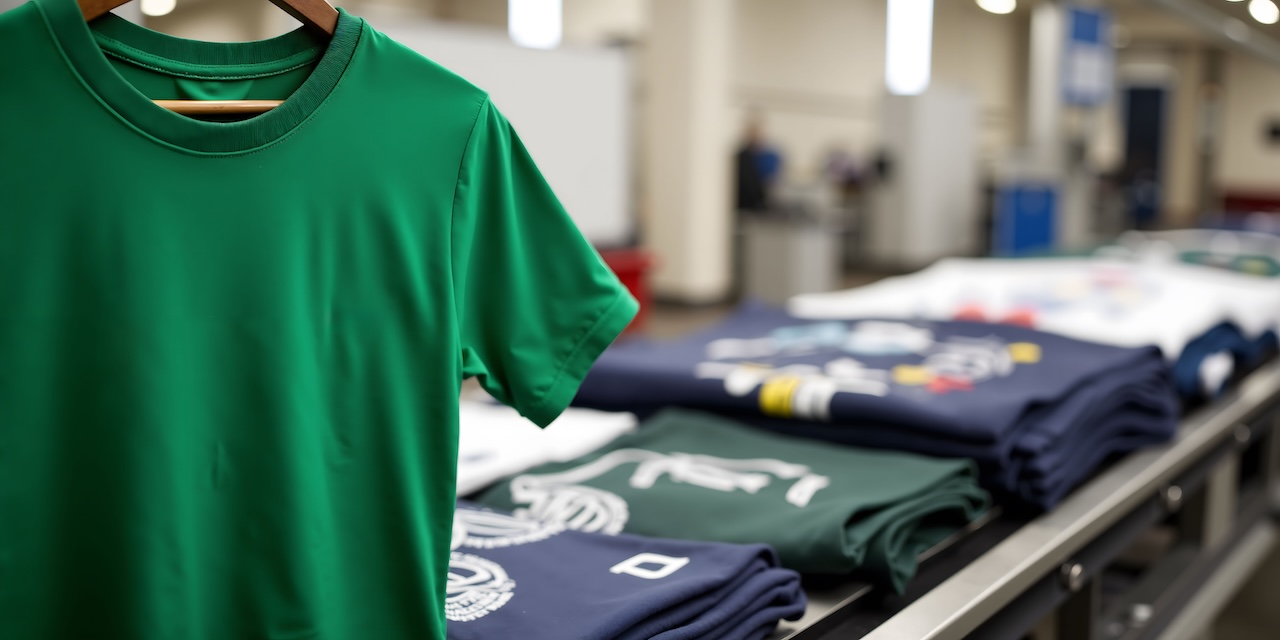Five more tips for establishing a top-notch quality-control system in your shop
In Part 1 of this two-part series, we looked at four specific, concrete steps custom apparel decorators can employ to ensure their products are the highest quality possible, i.e., create an effective quality control (QC) program.
Something to bear in mind: while it may seem like a lot of work putting processes like these in place, the benefits will be more than worth it, in the long run, especially. Wastage costs money, and there’s no quicker way of losing a customer than not meeting their expectations. Not only will a disgruntled customer be more than happy to take their business elsewhere, but your competition will be more than happy to take their business.
Again, as Rodney McDonald, president at US Colorworks (uscolorworks.com) said in Part 1, the flip side of the fact you get a lot of decorators that start as hobbyists is they don’t always approach their work with the same level of intent as a pure businessperson. By following the advice below (and in Part 1) you’ll go a long way ensure you’re not one of those businesses.
1. Document every step of the decorating process
If you keep records of inspections, tests and any corrective actions taken during production, this documentation helps track quality trends you can use to make continuous improvements. “Whenever you have an error or a problem that pops up, it works to have one person managing the research to find the cause,” US Colorworks’ McDonald says. “Then when you know what to fix, make sure everyone who comes in contact with that area, even remotely, knows about it.”
With this in mind, well-run shops, like US Colorworks, not only employ a variety of different online shop management tools but maintain a host of different master knowledge bases where employees can access procedures and specifics about certain jobs.
“Besides keeping notes in a customer file, we also have pop-up reminders that say, ‘Don’t forget to do this or that,’” McDonald says.
Similarly, Marshall Atkinson, a business consultant at Atkinson Consulting (atkinsontshirt.com) and publisher of the AI e-newsletter, Midjourney Experience (midjourneyexperience.com), urges shop owners to track their data diligently to better understand their production and any issues that might arise. “You’ve got to measure what’s happening in your shop. How many orders or impressions are you running daily?” Atkinson says. “Knowing that can help you catch issues early and improve your process over time.”

Ensuring your team receives adequate training on the equipment it uses is another great way of upping product quality. Image by Grispb – stock.adobe.com
By way of an example, Stakes Manufacturing (stakesmfg.com) co-founder Jed Seifert says all shop data is captured and stored in real time within its management system, with flags and alerts to notify staff when trends or spikes need attention.
Beyond that, Atkinson notes shops need to make of point of addressing any problems that arise at their source rather than relying on quick fixes that do little more than simply get things running again.
“When something goes wrong, it’s usually a sign of a deeper issue,” Atkinson says. “For example, if your screens keep getting pinholes, your maintenance might not be up to par. It’s better to fix the root cause than just patch it on the spot.”
2. Test prints and commercial apparel decorating
As a testament to the importance of test prints, Keith Burwell, owner of Precision 1 Koncepts (precision1koncepts.com), says his team makes sure to do a test-print on every print job it gets in order to verify the artwork looks good, even for reorders.
Along these same lines, at Stakes, Seifert says, the company has set up a rigorous new-garment onboarding and testing process, during which his team individually profiles and wash-tests each color to build the best print recipes.
“We print samples throughout the testing process to measure dye migration, color fastness, vibrancy, peeling or cracking and hand-feel pre-wash cycle along with other variables specific to the print application,” he says, describing the thoroughness of the process.
In addition, Seifer says, “We regularly spot check test printed units in production for integrity of the print, including wash testing for durability, color accuracy testing with a spectrophotometer, and crock testing (for color fastness) with a crockmeter as well as a multi-person QC check on every printed unit before it ships.”
Something to bear in mind, though, when engaging is these kinds of tests is that, while test runs are great, they’re not foolproof.
“If you’re doing a water-based print run, it’s easy to control all the variables within that short run,” McDonald says, but “when you do a water-based discharge print on a big run, adjusting for all the variables is harder because the ink starts drying out. You need controls in place to identify when your variables are exceeded. If you hit the min-max on temperature or print settings, you know something needs to be fixed.”
3. Detecting, correcting Decorating Errors
Does your shop have specific set of procedures in place for fixing any defects or issues the staff may identify or that may arise: whether it be reworking the product, adjusting the production process or rejecting an item or items outright?
For its part, Seifert says Stakes goes truly granular in terms of how its teams categorize defects to adapt and quickly address any issues that may arise. This is true whether the problem is equipment or operator related. “We track QC defect data with internal spoilage metrics and external customer feedback metrics,” Seifert says. “Our systems are set up to see red flags caused by spikes, particularly QC issues overall, individual equipment error upticks, and human errors per employee, to highlight irregularities in the data that need our attention. You’re only as good as your data.”
Similarly, at Precision 1, the team begins the process when it receives and checks freight against work orders after which the production teams recheck it for errors and a post-production team inspects it yet again during boxing and shipping.
“If you’re focused on repeat business and customers, you pay attention to fixing errors at every step. Having a recipe for different processes means you’ve done the testing and don’t have to recreate the wheel each time. Spending a little time on the front end to find and fix errors has always saved us time on the back end,” McDonald says.
4. Training your production team
According to Atkinson, one of the biggest challenges when establishing an effective set QC program is ensuring your employees know how to recognize and address quality issues and recognize the importance of maintaining standards.
“Shops need to do a better job training their employees,” Atkinson says. “Before starting a job, gather the team to discuss how it should run. That little bit of preparation can save a lot of headaches later.” By having these kinds of quick “huddles” before running a job, he notes, teams can be that much more confident that they’ll get the result they’re after as well.
Along these same lines, at US Colorworks, McDonald says, his team puts this mindset into action by making employee training a priority. “Quality is a function of that training,” he says. “Each of our operators has the necessary training and is certified to run the machine they’re running…more importantly, they have all the resources to research when they don’t know something.”
5. Addressing mistakes with customers
Unfortunately, in the real world, no matter how hard you try, mistakes happen. The good news is if you respond to these kinds of mistakes effectively they can actually serve to strengthen your customer relationships.
“Even if you’re 99 percent perfect, there’s still a 1 percent error rate,” McDonald says. “Every time you have a mistake or customer complaint, don’t just ignore it and say, ‘I’ll do better next time.’ Dig down into why that mistake happened, and then figure out what you’re going to do to eliminate the possibility of that mistake happening again.”
Similarly, Seifert emphasizes the importance of addressing customer concerns promptly. “We address any manufacturer defect reported by a customer immediately,” he says. “While we strive to be ‘perfect,’ errors happen. We believe the speed and effectiveness of the resolution, not the error itself, truly defines the type of partner you are.”
Precision 1 Koncepts’ Burwell agrees, noting that while mistakes are rare, transparency with his team keeps things moving. “It’s never a blame game, but we let everyone know where the issue was when it happens,” he says. “It’s rare, though—my team is awesome.”
Conclusion
Again, when it comes to being successful in the decorated-apparel business, an effective quality-control program is critical not just for ensuring your customers are happy with their current order, but providing them with the confidence to make you their decorator of choice in the long run as well. As an added benefit, by minimizing wastage and maximizing the efficiency of your company’s production processes, you’ll be boosting your company’s bottom line as well.
Nicole Rollender is an award-winning writer and heads up the copywriting and content-creation firm Strand Writing Services. strandwritingservices.com. For more information or to comment on this article, go to strandwritingservices.com. To see Part 2 of this two-part series, click here.





